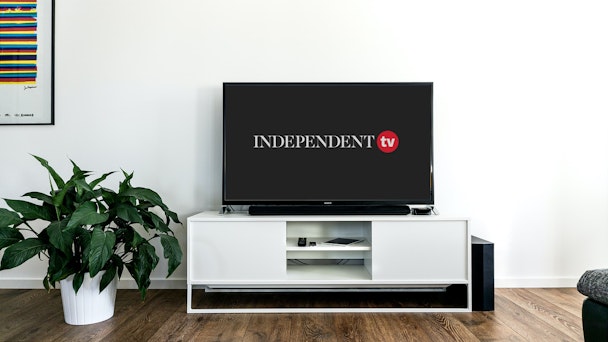‘Full-on TV’: why The Independent is taking its video content OTT
The Independent is going all-in on video. Its Independent TV hub – already a separate section on the site – is set to expand into OTT with its own app and a greater variety of programming.

The Independent’s TV-style programming is expanding on to new platforms
This follows a hugely successful initial launch for the hub last year, and programs that have outperformed expectations. Video views on the platform saw 40% month-on-month growth in the first six months of its operation, and its program ‘Binge or Bin’ enjoyed 250,000 views in its first week alone. The video content has outpaced expectations internally, and its revenue is on track to hit 150% of 2020's - more than double last year's.
It is, says The Independent’s managing director Christian Broughton, the beginning of a journey that will lead to its video offering equating to a “full-on TV” experience.
Visual storytelling
The Independent’s video content already exists on platforms like YouTube and Facebook, in addition to the hub. Regardless of the platform on which the video is distributed, Broughton believes that the core offering – that of The Independent’s storytelling – acts as “a gravitational force at the center”. That force is strengthened further by the behind-the-scenes work of the tech team, which has refined the ‘Next Vid’ recommendation feature to the point that a majority of users watch more than one video in a row, keeping them on-platform.
To that end he is keen to promote the work of the paper’s journalists. Reporters including Bel Trew, its Middle East correspondent, already see stories in terms of video, he believes. He cites Trew’s immediate coverage of the Beirut Blast in August last year as an example of the instantaneous news video that can be created and which adds value to audiences habituated to consuming digital video.
As it stands, The Independent team is going all-in on its TV offering. Based on the results – both in terms of reach and revenue – its senior team is keen to commission more video for the platform.
As with the rest of the title’s journalism, this process begins with a pitch – Broughton says that the title periodically does call-outs for any of its journalists to approach with an idea for a series. The goal, he says, is to translate some of its journalists’ appeal in the written form to popularity as hosts for the series.
Beyond the screen
Rather than simply commission off the bat, however, the team is taking pains to ensure the programming is financially viable – staving off the long shadow of the ill-fated industry pivot to video.
Once the idea has been developed, internally potential sponsors are approached to help fund the series. Broughton states that there are currently two series sat ready to go that are being shopped around to various sponsors.
He notes that the interplay between podcast content and video is helpful in this respect. He specifically cites Simon Calder’s influential and popular travel podcast Green List Travel as an example of an oven-ready TV show. Its popularity – and, crucially, its timeliness – has made it indispensable to the travel industry and to a bemused public. As a result, its translation to an Independent TV series makes sense from both audience and commercial standpoints.
While the Independent TV hub is growing in its own right, it is also contributing to other segments of the business. By logging in or simply consuming videos after one another, audiences contribute to the title’s anonymous-to-known user journey, which bolsters its first-party data. It also adds to the company’s international ambitions – Broughton says that his aim is to have multilingual options available as soon as next year.
The investment in video – genuinely revenue-generating video that advances The Independent’s interests elsewhere – is a bold move in light of the video cuts at other publications. The long shadow of the pivot to video and the ratings collapse at dedicated TV news channels could have inspired a bit of caution.
The difference, says Broughton, is that a blue-chip-led digital and OTT service that builds upon the title’s “likeable brand” status is sustainable first and foremost. He believes that, as the largest quality newsbrand in terms of digital footprint with 89m global browsers, The Independent has an opportunity that few other titles can match – and the primary medium by which to achieve that is in video.

